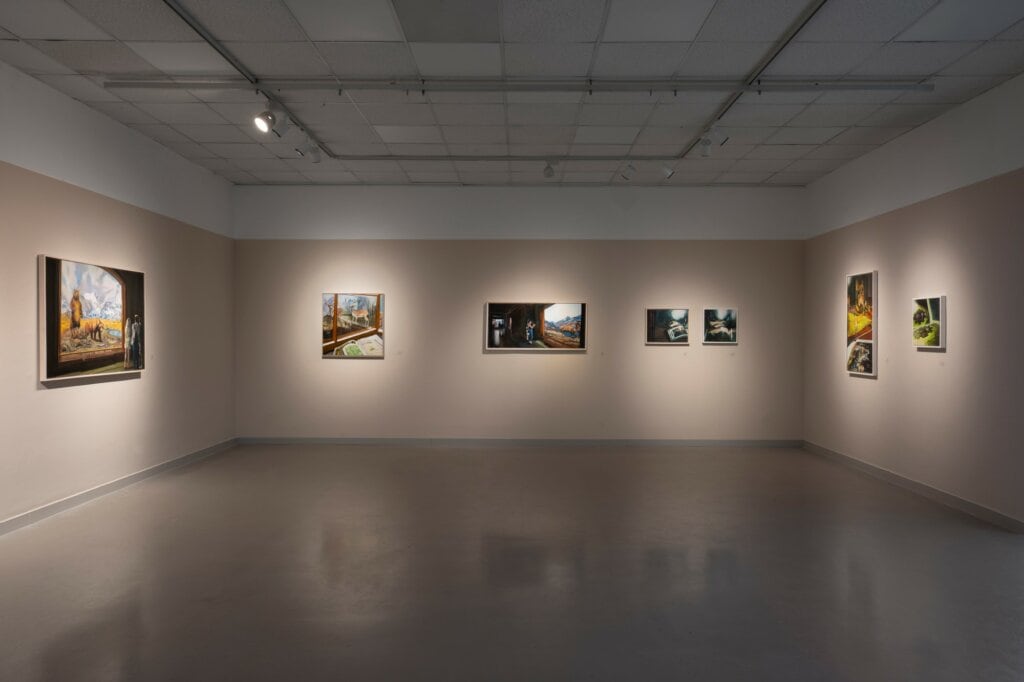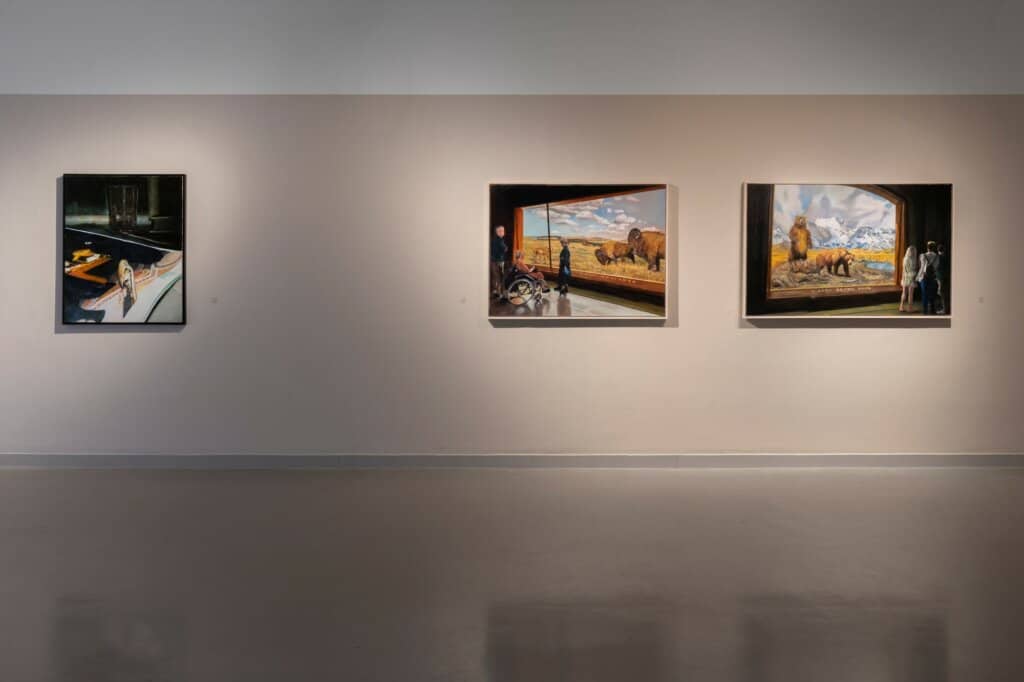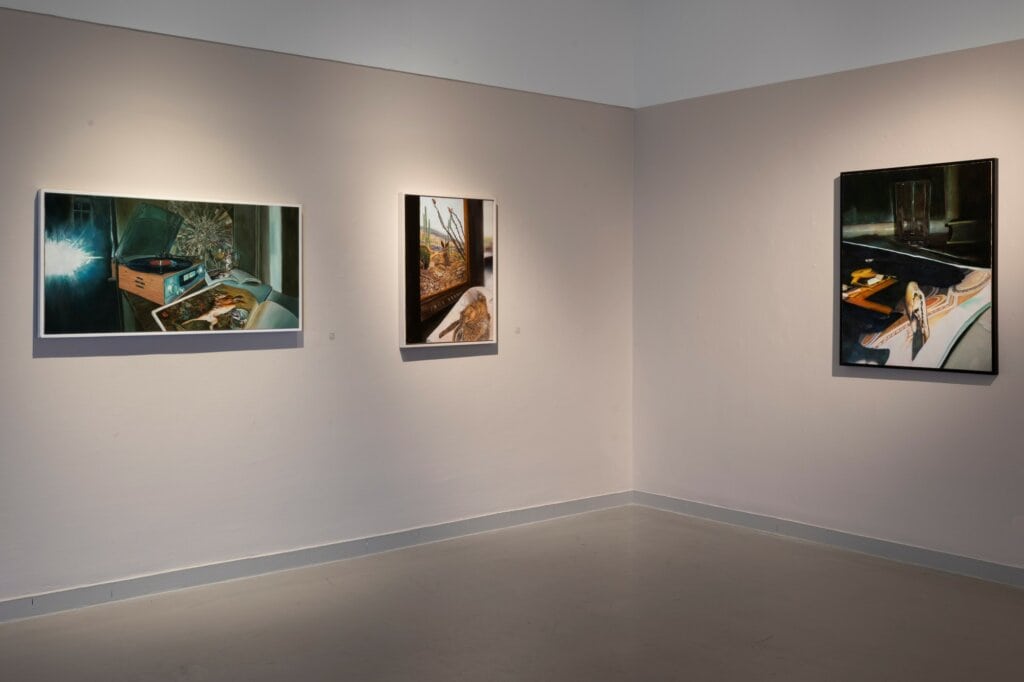Doron Wolf: Vanitas
Curator: Reut Ferster
21/06/2024 -
04/01/2025

Doron Wolf (b. 1976) depicts contemporary scenes in a meticulous figurative-realistic style. He looks into his personal life and the contemporary way of living through classical subject matter, including Vanitas—a 17th century still-life genre addressing the transience of human existence and the inevitability of death. He draws inspiration from photographic images he finds online or snapshots that he takes on his mobile phone, based on which he creates oil paintings using traditional techniques, raising questions about originality and the tension between the immediacy of photography and the slow, lingering nature of his oil painting.
Wolf explores the image in the present time, examining the perception of reality as mediated in an era of visual flooding. The artificial light in his paintings, emanating from flashlights or screens, distorts the image and inspires a sense of drama that echoes paintings from the past. They often combine a mirror or a reflection, emphasizing questions of originality, observation, and alienation. A turntable, a glass of wine, and a tennis ball are all handled with the same meticulousness employed in quoting art history’s masterpieces, or in a painting after a photograph of Nahalal, where he was born and raised.
The current exhibition is centered on a series of paintings inspired by New York’s Museum of Natural History, and one contemporary-local painting, created especially for the exhibition following a visit to the zoo adjacent to the Petach Tikva Museum of Art. The paintings portray groups of people looking at dioramas, in which taxidermies are set against a panoramic view in a dark museum space. According to Wolf, the works are “capsules of nature-culture, at once archaic and futuristic, conveying a sense of being frozen in time between the natural and the artificial, between death and life. They introduce a “still life” in both senses, namely a landscape painting and dead nature (nature morte), continuing the engagement with questions of representation and mediation of reality.” The works illustrate the connection between captor and prisoner, between man, nature and the environment, where the museum is regarded as a still mausoleum of splendor, beauty, indifference, and inauthenticity.
The viewer, the gaze, the objects of observation, and the dynamics between them are a central motif in Wolf’s oeuvre, which corresponds with dramatic and artificial staged scenes in the paintings of the Old Masters—seminal masterpieces in the history of art, whose unique quality lends them eternity: “In some of the works I quote from art books or art magazines, much like the way I was exposed to these masterpieces for the first time. These are fundamentals of my art education and observation of the world, an internal grammar that structures the world’s visual language for me. These paintings were created from the Renaissance and on, most of them before the invention of the camera, but they capture the visual field as if they were a camera. A copy of a masterpiece in an art book, which the reader knows is a reproduction, raises the question: Is the original important? Is the aura of the original work of art preserved in the reproduction? Does the original artwork really have an aura?”



Installation photographs: Tal Nisim

